Tsarina Hillary Clinton Is Going To Prison—It's Not If Anymore, It's When
25 September 2020
Hello Folks,
With 39-days remaining before the American people cast their votes in the most important presidential election of their lifetimes, it’s more than fitting that the “Unstoppable Force” of President Donald Trump saying he won't commit to the peaceful transfer of power has now met the “Immovable Object” of Hillary Clinton ordering Joe Biden not to concede this election “under any circumstances”—a situation known as the “Irresistible Force Paradox”, as neither can be true, otherwise they’d cancel themselves out—which means what you’re really witnessing here is a “False Dilemma”, which in this situation between Trump and Clinton sees there being one additional logically valid option to be considered.
For those of you who have long followed the Sisters, you’ll remember that when New York City real estate multi-billionaire Donald Trump stood at his podium at Trump Tower on 16 June 2015 and announced to the world “We need somebody that literally will take this country and make it great again...We can do that,...So ladies and gentlemen, I am officially running for president of the United States”, they told you that what you were witnessing wasn’t a presidential campaign, but a “Three Act Play”—whose main character protagonist Trump was pitted against his chief foe antagonist character Clinton—and whose plot would progress in such a way as to pose a yes or no question (called the major dramatic question) such as: Will the boy get the girl?—Will the hero save the day?—Will the detective solve the mystery?—Will the criminal be caught by law enforcement and brought to justice?—Will the protagonist be murdered by the fugitive?
As in every movie you’ve ever watched, this real life Trump-Clinton drama saw its First Act establishing these main characters, their relationships, and the world they live in—in its Second Act saw the main character protagonist Trump finding himself in ever worsening situations—and in its Third Act, saw its climax scene being played out on election night when, against all odds, protagonist Trump vanquished his antagonist foe Clinton—a climax ending, though, that Sister Ciara may have spoiled for many of you with her 22 October 2016 letter “Donald Trump Landslide Victory Races World War III To Finish Line”, wherein she told you Trump was going to win, and said: “And before anyone objects to my stating that Donald Trump is on the cusp of achieving a landslide victory, let me assure you this is based on fact, not supposition”—that 9-days later, on 31 October 2016, was followed by the “official” polls telling you that Clinton had an overwhelming 90% chance of winning this election.
By the Sisters having accomplished this remarkable feat of telling you before the Trump-Clinton movie ended who was going to be victorious, it means you should have taken notice when they explained right afterwards that it was only the first film of a continuing drama series—whose production of began in December-2016 right after the first movie ended—and was when then President-elect Trump met and had dinner with his co-producer Carlos Slim on 19 December 2016—about whom some of you might know is the Mexican multi-billionaire who’s the 12th richest person in the world—though what is least known about is he and his family being devout Maronite Christians from Lebanon—a Maronite Church that’s an Eastern Catholic Church in full communion with the worldwide Catholic Church.
And in knowing about, enables you to understand why, immediately after President Trump was sworn into office, Carlos Slim told the Mexican government that Trump’s “not a terminator, he's a negotiator”, and for what the future held, saw him telling them “What President Trump signifies for us is a big change, a big change in politics and we need to make adjustments in this new civilization”—a “new civilization” being created by President Trump that Carlos Slim has been a co-creator of, as he is the powerful majority owner of Trump’s most ruthless foe The New York Times Company—that at first glance may seem perplexing, as no other leftist publication has attacked President Trump so viciously with fake news lies—but when knowing the ancient Sun Tzu war strategy “To Know Your Enemy, You Must Become Your Enemy”, allows you to understand everything that President Trump and Carlos Slim having been doing—and to example for you how close the Third Act climax is for this movie episode, just notice that James Bennet resigned as New York Times Opinion Editor on 7 June—Mark Thompson stepped down from his position as Chief Executive Officer of the New York Times on 22 July—and two days ago, Arthur Sulzberger Jr. suddenly announced his retirement as New York Times Company Chairman on 23 September.
You know it’s impossible for me to describe in this short letter everything relating to the Sisters’ revelations of this present drama, the historical basis needed for your full understanding of what’s going on, and where all of this is leading to—though always available for you is the Sisters’ Archive containing thousands of their reports going back nearly 20-years detailing in exhaustive length everything one needs to know for understanding everything—and I’m saying this as a preface to the simplest story I can tell you about what’s soon to happen, and why.
A story that begins with Nicholas II of Russia, who in the early hours of 17 July 1918, was executed along with his wife and eight children by communist revolutionaries—a mass execution occurring in the waning months of World War I, that ended four months later on 11 November 1918—a world war whose three principal monarchs were Kaiser Wilhelm II of Germany; King George V of England; and Tsar Nicholas II of Russia—all of whom were cousins with each other (Wilhelm and George were first cousins, George and Nicholas were also first cousins, and Wilhelm and Nicholas were third cousins)—but most important for you to know about this mass execution, is that it didn’t have to happen—because all communist revolutionaries in Russia wanted was for Tsar Nicholas II and his family to go into exile—but his own cousin King George V of England refused to allow it.
Now you can read volumes of revisionist history as to why Tsar Nicholas II and his family were allowed to be executed, but the simple reason was because he had no place in the “new world” that was being created and was expendable—and whose exact counterpart today is Hillary Clinton—who herself is one of the most corrupt and inept leaders in modern history, only comparable on the stage of history to Tsar Nicholas II, whose own corruption and ineptness caused a world war and revolution—and in the “new world” being created by President Trump, it sees Hillary Clinton being not only dangerous, but expendable.
To understand how expendable Hillary Clinton truly is, it helps to understand the military strategy term known as “triangulation”—which is the process of determining the location of a point by forming triangles to it from known points, and is used by artillery forces to box in enemy forces and destroy them—is also a strategy used against individuals targeted for destruction—and in the past 48-hours, sees this “triangulation” strategy being deployed against Hillary Clinton—with it first being revealed that Hunter Biden received a $3.5-million wire transfer from the wife of Moscow’s former mayor—which was followed by the news that US Attorney John Durham is now investigating how the FBI handled their investigation of bribery and pay-to-play allegations against the Clinton Foundation.
What you’re not being told about this “triangulation” strategy just deployed against Hillary Clinton is that the Moscow mayor’s wife who wired $3.5-million to Hunter Biden is Elena Baturina, the richest woman in Russia—whose corrupt ties to Hillary Clinton and the Clinton Foundation were documented by Government Accountability Institute in their exhaustive report “FROM RUSSIA WITH MONEY: Hillary Clinton, the Russian Reset, and Cronyism”—and was part of the reason why former FBI Director James Comey explored fileing Espionage Act criminal charges Hillary Clinton in 2016, but was prevented from doing so by Obama’s Department of Justice—a fact confirmed by under oath testimony to the US Congress given by former top FBI attorney Lisa Page—but in under oath testimony obtained by the Department of Justice Inspector General, it saw FBI Director Comey denying this was true.
With nearly every single high intelligence official in the former Obama-Clinton Regime being caught in so many under oath lies about covering up Hillary Clinton’s crimes, while at the same time they tried to overthrow President Trump before he found everything out, leaves us having to look back into history for guidance as to what’s going to happen next—and sees history giving us the “Business Plot” (aka “White House Coup” and “Wall Street Putsch”) overthrow attempt of President Franklin D. Roosevelt in 1933—an overthrow attempt foiled by US Marine General Smedley Butler (the most decorated US Marine in history), whom these coup plotters chose to lead their military forces to overthrow and kill President Roosevelt—but instead of doing, General Butler went to the US Congress and reported this crime—a US Congress that secretly investigated this coup putting it to an end—but for which no one was ever charged, and whose US Congressional documents proving the facts of this coup attempt weren’t released until the 21st Century.
What these facts and history leave us with is determining if Hillary Clinton is going to receive the fate of the “Business Plot” coup plotters, or that received by Tsar Nicholas II—and whose only logical conclusion sees it being the latter—though it won’t be an execution death, but a fate worse than death prison term Hillary Clinton now faces for her crimes—and in whose “triangulation” strategy being deployed against, will see her husband former President Bill Clinton being powerless to do anything about, as he knows that if he tries anything, all of Jeffrey Epstein’s child sex slave crimes will be poured all over him.
It goes without my having to tell you that the truth, facts and analysis you’ve been reading about here are under the most unrelenting attack ever seen occurring in supposedly free press nations—attacks that will only grow in ferocity until this “movie” ends—and is why I implore all of you to read the letter Sister Ciara sent to you yesterday, “Best Kept Secret Of Science Explains Everything About Trump And 2020” so you can more fully understand what’s happening—and either at her letter, or by going below in this one, will you please give what you can today so Truth can win out—after all, we’re all in this together, and only by helping each other can we achieve victory!
Thank you for listening and aiding us in our hour of desperate need by going below and giving what you can, and as always, please feel free to write me at sorchafaal@fastmail.fm with any comments/questions/suggestions, remembering to put ATTN: BRIAN in the subject line.
All the best folks, Brian Webmaster Paris Fr.
Romanov Exiles: How Britain Betrayed the Russian Royal Family
Coryne Hall is a historian and broadcaster specialising in Imperial Russia and European royalty, her books include Little Mother: A Biography of the Empress Marie Feodorovna, 1847-1928 and Once a Grand Duchess: Xenia, Sister of Nicholas II. We spoke to her about her latest book, To Free the Romanovs: Royal Kinship and Betrayal in Europe, 1917-1919, to discover how Britain’s George V left the Imperial family high and dry, and the pivotal role she played in laying an empress to rest.
The British royal family were placed in an awkward position by the Romanov requests for help, who was it deemed politically acceptable for Great Britain to assist and who was deemed unacceptable?
It was unfortunately not considered acceptable to offer asylum to the Tsar or any male members of the Russian Imperial family. The British government needed to keep Russia in the war as allies and did not want to upset the Provisional government, who they had already recognised as the legitimate rulers of Russia. The Petrograd Soviet and other extremists were against any members of the Imperial family going abroad, as this might give them access to funds to stage a counter revolution.
In early 1919, at the request of his mother Queen Alexandra, who was the sister of the Dowager Empress Marie Feodorovna, George V did rescue members of the Imperial family who were stranded in the Crimea. The only members of the Imperial family who were permitted to come to England were the Dowager Empress, her daughter Xenia and some of Xenia’s sons (but only because, as the British government said, the boys ‘did not possess Grand Ducal rank or title’). They were allowed to come to England (with a fairly low-key welcome) on what was described as a ‘family visit.’
At the end of 1918 Grand Duke Dmitri Pavlovich, the Tsar’s cousin, slipped into England with a British diplomatic mission from Tehran. He was not made very welcome, and nor was his sister Marie who soon joined him. Both left fairly quickly to live in Paris.
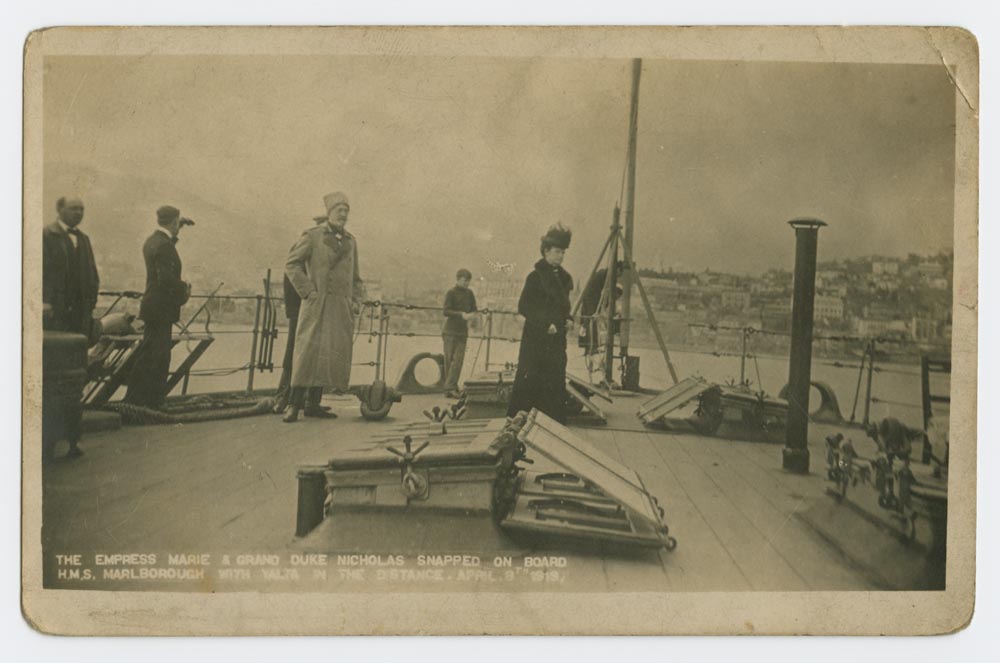
What was life like for those of the Romanov family who settled in Britain? How many stayed close to the British royal family and how long did their use of royal apartments last?
It was only Grand Duchess Xenia and some of her sons who remained in England for any length of time. The Dowager Empress left for her native Denmark in the summer of 1919.
Xenia was George V’s favourite cousin and he gave her Frogmore Cottage as a grace and favour home in 1925. She used to go up to Windsor castle to see the King and Queen, and King George helped her with various difficulties.
However, after he died in January 1936, Edward VIII said he wanted Frogmore as a sanctuary for the royal family and, reluctantly, Xenia had to leave. She was offered Wilderness House, Hampton Court, and moved there in March1937, remaining until she died in 1960.
Most of the other exiled Romanovs settled abroad. They were not wanted in Britain.
Of the other European monarchies on the throne in 1917, which came the closest to providing support to the Tsar’s immediate family?
Although he could do nothing to help the Tsar, King Christian X of Denmark (Nicholas’s cousin) and his ambassador Harald Scavenius did the most to help members of the extended Romanov family. They constantly lobbied for the release of the Dowager Empress and her family, as well as better conditions for them. They also tried to negotiate the release of the four Grand Dukes held in the SS Peter & Paul Fortress in 1918. Unfortunately, just as a ransom was being negotiated the Danish Government recalled Harald Scavenius under pressure from France. The four Grand Dukes were shot in January 1919.
Queen Marie of Romania (another of the Tsar’s cousins) tried to get her relatives out of Russia at the end of 1918. Although the Dowager Empress turned down her offer of help, Queen Marie did manage to help a few members of the family.
In the autumn of 1918 King Alfonso XIII of Spain tried to negotiate asylum for Empress Alexandra and her daughters, who it was widely believed at the time were still alive and being held by the Bolsheviks. He was all ready to receive them in Spain, and then it became apparent that they had died with the Tsar.

Which of that generation of Russian exiles have you found the most fascinating, and which do you keep coming back to?
The Dowager Empress Marie Feodorovna, and Grand Duchess Xenia and her family.
The dramatic life of the Empress Marie has fascinated me for years and resulted in me writing the first real biography of her in English (“Little Mother of Russia. A Biography of the Empress Marie Feodorovna 1847-1928.” Shepherd-Walwyn, 1999). She had to watch while everything she loved – her family, the church, her adopted country – was destroyed before her eyes. She certainly lived one of the most dramatic lives of anyone to occupy the Russian throne.
Xenia’s sons were brought up expecting a certain standard of life, and then they found they had to go out and earn their own living in a different world. Some had more success than others! I knew several of Xenia’s grandsons, who helped a lot when John Van der Kiste and I were writing “Once a Grand Duchess” (Sutton Publishing, 2002). I loved hearing the stories they were able to tell about their grandmother and other members of the family.
You’ve dealt with a lot of primary sources during your research, some of which I’d imagine, hasn’t left the family until you gained access: what have you learned that’s genuinely taken you by surprise?
The attitude of King George V and the British government towards all the Grand Dukes, not just the Tsar. They were definitely not wanted in this country. When Grand Duke Dmitri arrived at the end of 1918, he was asked by the Foreign Office to leave Britain. He refused to go unless ordered to by the King. Later, at an awkward meeting at Buckingham Palace, King George told him “you are here only by accident.”
Could you tell us about the role you played in the reburial of the Dowager Empress, Maria Feodorovna?
The Dowager Empress Marie Feodorovna died in Denmark in 1928 and was buried with members of the Danish royal family in Roskilde Cathedral. In “Little Mother of Russia” I stated that her wish was to be buried beside her husband Alexander III in St Petersburg “when circumstances permitted.”
I was later contacted by Prince Nicholas Romanov, at that time head of the Romanov Family Association, who asked me where this information came from. I was able to tell him that it was from the churchwarden at Roskilde Cathedral, whose father, also churchwarden, had been told this personally by the Empress. Prince Nicholas approached Queen Margrethe of Denmark, who then approached President Putin to arrange the reburial.
In September 2006 the Empress Marie’s remains were moved from Roskilde Cathedral and taken to the SS Peter & Paul Cathedral in St Petersburg. My husband and I were invited by the Danish Court to the service in Roskilde Cathedral, and by the Russian Government to the burial service in SS Peter & Paul Cathedral.
It was an extremely moving moment for me as I felt I had fulfilled the Empress’s last wish.
To Free the Romanovs: Royal Kinship and Betrayal in Europe, 1917-1919, the latest book by Coryne Hall, is out now from Amberley. For a fresh look at pivotal moments in history, subscribe to All About History from as little as £13.
Macbeth is one of William Shakespeare’s most famous works, having kept audiences spellbound with its tales of murder, betrayal and a sprinkling of the supernatural for centuries. It tells of an ambitious noble whose lust for power sees him kill his friend and king to gain the throne, spurred on by a prophecy from a trio of witches and his ruthless wife. Macbeth’s treachery sees his enemies come back for revenge and he dies alone and friendless at the end.
We do not know a lot about the real Macbeth, who lived from 1005-1057. But what records we have suggest his rise to the throne, while quite different to Shakespeare’s tragedy, was no less bloody. We find a man whose ambition drove him to become ruler of the kingdom of Moray and then the whole of Scotland — a feat achieved over the slain bodies of his enemies. The Bard didn’t have to look hard to find drama and intrigue, but he did not tell the whole story. Macbeth was not as underhanded as his literary counterpart. He also ruled a strong and stable Scotland for almost a decade, putting it on the European map as a place of international renown.
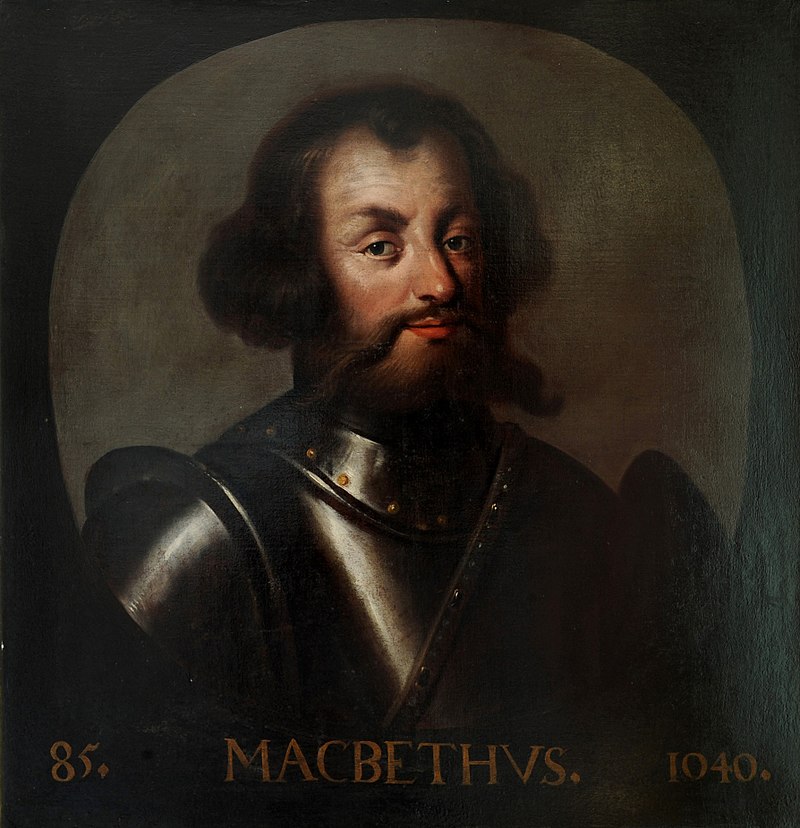
King Macbeth, in a portrait painted in 1680 – long after he (and Shakespeare) had died.
Scotland in the 11th century was much different to the one we know today, made up of a patchwork of loosely connected kingdoms. Alba was the largest and most central state. The seafaring Jarldom of Orkney, ruled by the Lord of the Isles, encompassed the Outer Hebrides and the northern tip of the mainland. Strathclyde made up the area running from Glasgow to Penrith. Moray, where Macbeth’s family ruled, included Inverness and Aberdeenshire.
It is impossible to ascertain exactly how these kingdoms interacted with each other, but many historians think that each was ruled autonomously by a ruler that was subservient to an overarching king of Scotland. This system would have been similar to the Irish high kings of the same period. Ruling from his seat in Alba, Malcolm II was the high king of Scotland when Macbeth was born.
Generations of war and dynastic conflict had seen Scotland’s crown pass from brother to brother rather than the more familiar primogeniture, which hands the crown down from father to son. With many Scottish kings in the 10th and 11th centuries being killed by their rivals, this system ensured that someone was always ready to rule without the number of claimants to the throne growing ever larger.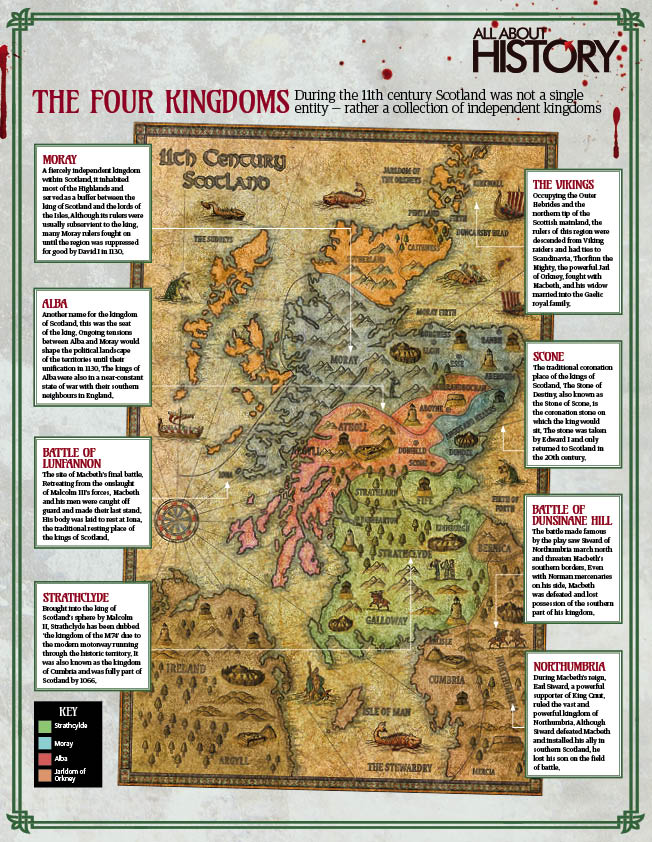
However, Malcolm was a powerful figure in the region. Killing his predecessor, Kenneth III in 1005, and allegedly securing his territory by defeating a Northumbrian army at the Battle of Carham (around 1016), he not only confirmed the Scottish hold over the land between the rivers Forth and Tweed but also secured Strathclyde about the same time.
As savvy a politician as he was a general, Malcolm saw the Norman feudal system down south and decided to defy tradition. He would, from now on, pass the crown directly to his heir. He set about removing all the rival claimants to the throne in a very direct way — by killing them. It’s highly probable Macbeth was Malcolm’s younger cousin, so he was lucky to survive this cull. Malcolm is Medieval Scotland’s only real example of a serial killer. His consolidation of power was arguably far worse than anything the real Macbeth ever did.
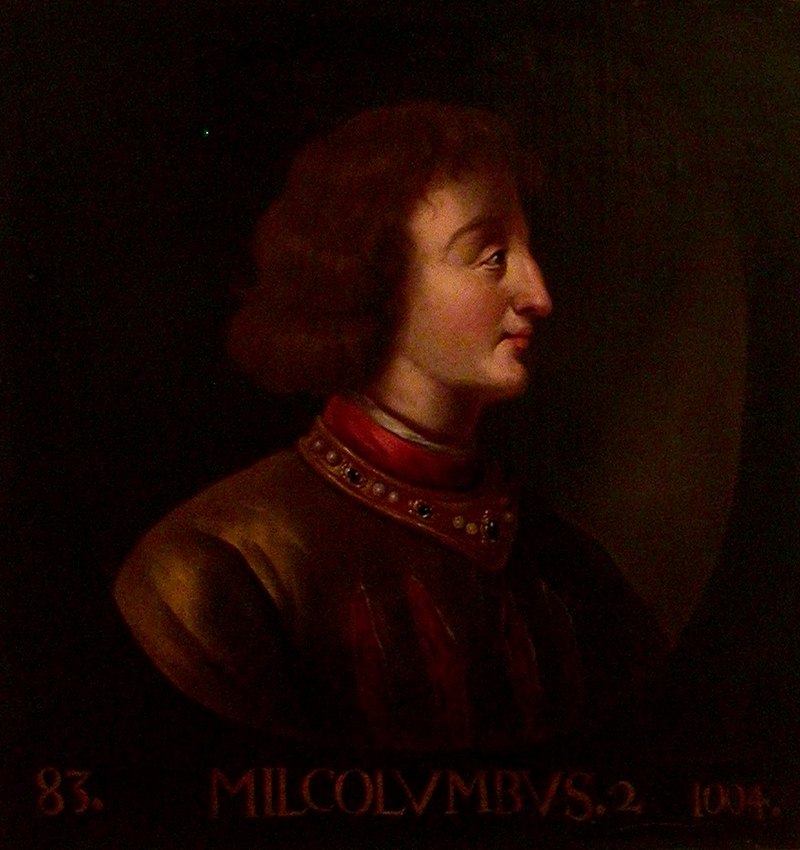
Malcolm II in a blood red outfit – fitting for the man who had so many killed
A major flaw in Malcolm’s plan, though, was that there is no evidence of him actually fathering a son, only daughters. Instead, his grandson Duncan would inherit his crown, becoming Duncan I. This is the supposedly good king Macbeth betrays in Shakespeare’s play.
The kingdom of Moray was ruled by a mormaer, meaning high steward, and was the position held by Macbeth’s father Findlaech, or Findley. This means Macbeth’s name was quite unusual. ‘Mac’ usually means ‘son of’ — like ‘Macduff’ would mean ‘son of Duff’ — but as Macbeth’s father was called Findley his name meant ‘son of life’. In later life, Macbeth would be known by another name, ‘The furious Red One’, presumably given for his prowess on the blood-splattered battlefield.
Despite Malcolm II being the high king, Findley clearly didn’t respect him as he sent a constant stream of raiding parties into his territory. This outward show of aggression was tempered by an internal feud when Findley was usurped and murdered by his nephew Gille Coemgáin. The new ruler of Moray would then go on to marry a Scottish princess, Gruoch — from the line of Kenneth III, who Malcolm had killed to assume power. As well as inheriting Moray, their son Lulach could make a claim for the high kingship.
While this might have placed the boy in Malcolm’s crosshair, Macbeth got in the way. Findley’s son wanted to retake Moray. In 1032, Gille Coemgáin and 50 or so of his followers were locked in a hall that was set alight, roasting all those inside. While there is some ambiguity as to who ordered the killing, Macbeth stood as the one to benefit most. The fire saw Macbeth’s opposition die gruesomely and he now stood as uncontested ruler in Moray. Shrewdly, Macbeth also married Gillecomgáin’s widow and took her son as his ward. This is one of the few examples of Macbeth displaying the sort of underhandedness that Shakespeare would make him synonymous with.
No sooner was Macbeth king of Moray, he had to look to his northern borders to combat the growing power of Earl Thorfinn the Mighty. The Norse Orkneyinga Saga names Karl Hundason as the king of Scots and relates Thorfinn’s struggles with him to assert his control over the northernmost points of Scotland, namely Caithness and Sutherland. Hundason has been suggested to be Macbeth, although the reason for the ambiguity is unknown. If true, Macbeth failed to take away Thorfinn’s positions on the mainland, but as the Norse jarl got his nickname from his massive frame and skill in battle, he may have been out of his league.
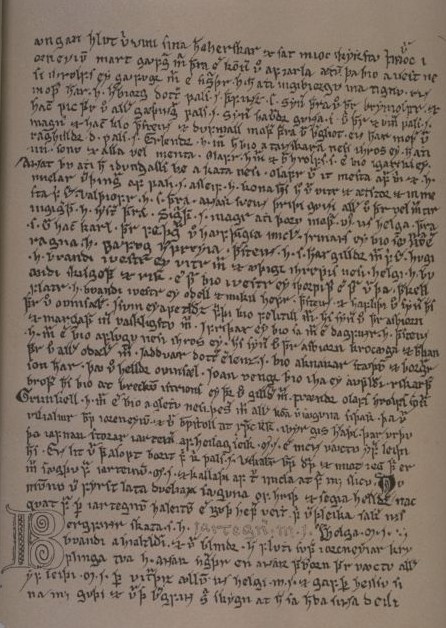
The Norse Orkneyinga Saga is a fantastic contemporary source about the history of Scotland
When Duncan took the crown in 1034, Macbeth may have seen a chance to extend his sphere of influence and gain the throne of all of Scotland. Duncan was seen as an ineffectual ruler, being described as “a man promoted well beyond his station” — a far cry from the fearsome Malcolm II. Our understanding of Duncan’s reign as peaceful comes largely from the play, but it seems that Shakespeare cherry-picked the good aspects and left out the drudgery to better place the king as a counterpoint to Macbeth’s tyranny and ambition.
Duncan I met his end at Macbeth’s hand, but the deed was not done in the dead of night in a bedchamber. The two met on the battlefield in 1040, near Elgin, and Duncan was slain. Whether it was Macbeth who did the deed is unknown, but some poetic licence can see this confrontation being a dramatic showdown.
The British Isles have a history of royal usurpers and Macbeth certainly fits the category. Many of the kings before him had taken the throne by brute force. In fact, violent succession was so commonplace in Scotland at the time that Duncan I’s peaceful coronation was somewhat of an oddity.
Aside from having killed Duncan, Macbeth could also claim lineage to the Scottish throne through his mother’s bloodline and, of course, his stepson Lulach. His claim was strong enough that he was crowned with no opposition. After his death, Duncan’s son — another Malcolm — would flee the country.
Once king, Macbeth faced very little opposition for much of his reign. However, having clashed with the Jarl of Orkney as the ruler of Moray, his kingship was contested in 1045 by Duncan I’s father, Crinán, abbot of Dunkeld. This powerful man could have been a real thorn in Macbeth’s side, but after a brief and violent struggle Crinán and 180 of his men lay dead. This was not an age of pitched battles in Scotland and many of the conflicts fought by Macbeth would have been on a much smaller scale to, say, the Battle of Hastings, which was fought in 1066 — about a decade after his death.
Crinán’s rebellion was Malcolm II’s bloodline trying to reassert itself and place the future Malcolm III on the throne. Just as in the play, Macbeth had won the crown by bloodshed, and the dead were coming back to haunt him.
However, after seeing this rebellion off, Macbeth did something no other king of Scotland had ever done: he went on a pilgrimage to Rome. This journey could have taken months, so this meant he must have been confident enough in the strength and stability of his reign that he did not fear usurpation. Macbeth was invited to a papal jubilee hosted by Pope Leo IX.
While in Rome, Macbeth “scattered money like seed to the poor”, implying he possessed great wealth. Scotland was flourishing, or at least not in financial trouble under his kingship. Macbeth’s visit to Rome also indicates a knowledge of the wider world and that Scotland was firmly on the European map during his kingship.
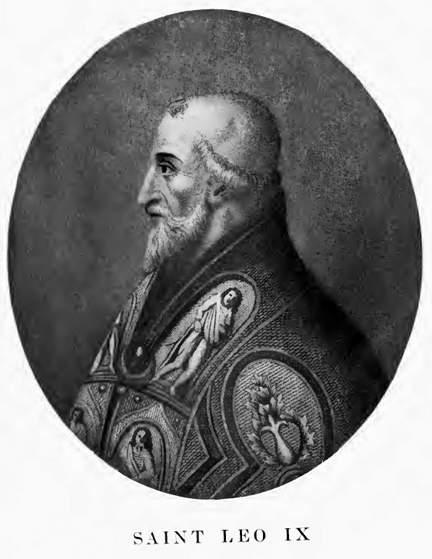 Pope Leo IX welcomed Macbeth to the Vatican
Pope Leo IX welcomed Macbeth to the Vatican
In a further sign that Scotland was open to international business, Macbeth’s reign also saw the first mention of Normans in Scotland when he took two into his service in 1052. Having left Edward the Confessor, two knights, Osbern and Hugh, joined Macbeth’s military council. Unfortunately, their impact in campaigns in opposition to the Normans’ reputation for military prowess was negligible and they were killed at Dunsinane. This was the beginning of trouble on Macbeth’s southern borders.
The battle, as in the play, saw a massive, well-equipped army march north from England led by Siward, the powerful Earl of Northumbria. While Birnam Wood did not uproot itself, as Shakespeare artfully put it, some 3,000 Scots and 1,500 English lay dead at the end of the day — a massive butcher’s bill for the era.
Although he survived the fight, Macbeth’s kingdom had a chunk taken out of it as Siward crowned Duncan’s exiled heir as king of Strathclyde. The death of Siward a year later must have filled Macbeth with hope, but this would be short lived.
Malcolm Canmore, the future Malcolm III, was seeking revenge for his father’s death and had his eyes set on the crown. He marched into Scotland in 1057 and surprised Macbeth and his men at Lumphanan in Aberdeenshire. He may have come from Orkney as he was married to Thorfinn the Mighty’s widow, whose past conflicts with Moray would see no love lost between the two. Macbeth’s enemies were uniting against him.
With his forces Malcolm cornered Macbeth at Lumphanan and after a fierce fight saw the former fall on the battlefield. It seems fitting that Macbeth’s death came by the sword of Duncan I’s son, the child of the very man he killed to take the crown. Perhaps this overwhelming sense of poetic justice is what convinced Shakespeare to choose just this king to write his play about.
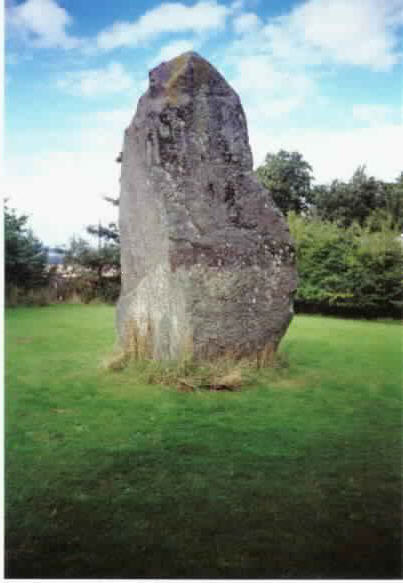
‘Macbeth’s Stone’ in Lumphanan village is said to be where the ruthless ruler was killed
But Malcolm didn’t take the throne straight away. Lulach, Macbeth’s stepson with the noble heritage, was taken to Scone by loyal followers and crowned king after his stepfather. However, the reign of Lulach — known as ‘the Unlucky’ or by less generous chroniclers, ‘the Idiot’ — was destined to be short-lived, as just four months later Malcolm would slay him at Essie in 1058 and take the throne as Malcolm III.
However, Medieval Scottish history is murky. An alternative tale sees Lulach and Malcolm combine their forces to take vengeance on Macbeth, the man who had killed both their fathers. After his death, Malcolm may have then rounded on his ally and taken the throne for himself. Whatever the actions, Malcolm III emerged victorious and ended Macbeth’s line for good.
Macbeth’s actions were not unusual for a Scottish king in this era of blood and strife, but his story is certainly made all the more famous as a result of Shakespeare’s dramatic attentions. While not the tyrant portrayed in the play, Macbeth claimed the throne through ruthless force, carving out a reign in a bloody and turbulent time in Scottish history.
We get a feel that Macbeth was a capable ruler and a man of ambition, taking revenge against his father’s killers to rule Moray by exploiting the political stage and using his military might to take the Scottish throne. While he was able to rule with impunity for a number of years, the feuds created by his actions came back to haunt him and he died at the hands of men hellbent on revenge.
of the Unicorn on the British Coat-of-Arms. |  |
The TRUE Israel People have, on their "Coat-of-Arms", a Lion and a Unicorn which is shown as a white horse "rampant" with one horn. The amber Lion "rampant" on the left-side is the emblem of the two-tribed "House of Judah" and the Unicorn or white Wild-Ox "rampant" on the right-side is the emblem of the ten-tribed "House of Israel", collectively making the 12-tribed "Kingdom of Israel".
The word British is Hebrew. It means "the People of the Covenant" or in other words "the People Israel", whose written Constitution; under that Covenant, that they have rejected to their own loss; is written in the Bible (Israel's Book) that they still swear on to tell the Truth, but whose Constitution, under which there are no poor people, is then foolishly rejected by almost everyone, in favour of inferior and unjust, man-made laws and economics which cause poverty and therefore also crime brought about by deprivation and desperation.
The Israelite tribe of Joseph (of the coat of many Colours/Coats-of-Arms) to whom Jacob/Israel gave his new name Israel and his Unicorn-Emblem (Deuteronomy 33:16-17) and the "Coat of Many Colours (many Coats-of-Arms*)", is, in fact, divided into two:- Ephraim and Manasseh.
Deuteronomy 33:16 And for the precious things of the earth and fullness thereof, and [for] the good Will of Him that dwelt in the bush: let ["The Blessing"] come upon the head of Joseph, and the CROWN upon the head of him [that was] separated from his brethren (Gen. 49:10 & 22-24).
33:17 His glory [is like] the firstling of his bullock, and his horns [are like] the horns of UNICORNS: with them he shall push the people together to the ends of the earth: and they [are] the ten thousands of Ephraim, and they [are] the thousands of Manasseh.
* To see the "Colours" from which Joseph's coat was made, please read my Booklet called "Gibraltar - British or Spanish? The TRUE Historical FACTS will surprise you"
Joseph had two sons, called Ephraim and Manasseh, whose descendants, today, are the English and English-Americans respectively and they are the TRUE Israel, because Jacob/Israel gave them alone the name Israel, and the sole Right to use the name Israel (Genesis 48:16):-
Genesis 48:16 The Angel which redeemed me from all evil, bless the lads; and let my name [Israel] be named on them (let Ephraim and Manasseh be called Israel), and the name of my fathers Abraham and Isaac; and let them grow into a multitude in the midst of the earth. Note well that Jacob/Israel did not give his name Israel to Judah/Jew-dah or any of his other sons.
Abraham, Joseph's great-grandad, was told by God that, "in Isaac shall your seed be called" (Genesis 21 v 12) - Isaac's sons - Saac's sons - Saxons. The British-English and the English-Americans are Engel-o'-Saxons or Anglo-Saxons. God's Word is ever TRUE.
The Unicorn-white horse (Engel) represents the horse upon which God's Witnesses (Rev./Apoc. 1 v 5) (Isaiah 43 v 12; Rev./Apoc. 11:3) ride, as in Revelation/Apocalypse 19 v 11. In England there are white horses that have been carved into hillsides, etc.
The Unicorn in Scriptural Code-language:-
HORN is the code-word for kingdom.UNICORN symbolizes a Unique horn - "One Kingdom , world without end" - God's Kingdom on Earth - soon.
On the Coat-of-Arms, the belt surrounding the shield; with which the people were to gird up their loins with great strength; has written on it, "Honi soit qui mal y pense"."Honi soit qui mal y pense" is Old French and it is one of God's rules concerning His advice and Divine-Justice and means "Evil be to him who thinks it".
Under it, in French, is written "Dieu et Mon Droit" - "God and My Right" - the Birth-Right of Israel (the British and related-nations), given to Ephraim - the Engel-ish.
The Unicorn (or Wild-ox - the Engel) has the Crown of Israel around its neck so that it is not possible to remove it. The crown is chained to the words "Mon Droit", which means "My Right" and refers to the Birthright given to Ephraim, which, like the crown to which it and the Unicorn (Engel) is chained, can never be removed from Ephraim - the Engel-ish.
The Lion "rampant" represents the "House of Judah" wearing a crown that can and will be removed, when Shiloh (from Ephraim) takes His Rightful* British Throne (Genesis 49:10, 22-24), soon, from the "House of Windsor", which is, like Elizabeth 2, descended from the "House of Judah" and the royal-line of David:-
Genesis 49:10 The sceptre shall not depart from Judah [to Joseph], nor a law-giver from between his feet, UNTIL Shiloh comes [from Joseph-Ephraim v 22-24]; and unto him [shall] the gathering of the people [be].
49:22 Joseph [is] a fruitful bough, [even] a fruitful bough by a well; [whose] branches run over the wall:
49:23 The archers have sorely grieved him, and shot [at him], and hated him:
49:24 But his bow abode in strength, and the arms of his hands were made strong by the hands of the mighty [God] of Jacob; (from THERE [is] The Shepherd, The [Corner] Stone of Israel:)(Daniel 2:34-5; 45)
* Ezekiel 21:26 Thus saith the Lord "I AM"; Remove the diadem (sovereignty), and take off the crown: this [shall] not [be] the same: exalt [him that is] low (Line of Judah/Zarah), and abase [him that is] high (Line of Judah/Pharez).
21:27 I will overturn (1), overturn (2), overturn (3), it: and it shall be no [more], [overturned] UNTIL he come whose Right it is; and (4) I will give it [him - Shiloh/Christ (Genesis 49 v 10)].
1. From Judah/Pharez in Jerusalem to Judah/Zarah (of the "Red Hand" - Genesis 38:28-30) at Tara, County Royal Meath, Ireland, constituting the abasing of the high ones (Pharez) and the exalting of the low ones (Zarah).
2. From Tara to Scotland and Fergus the Great.
3. From Scotland to England, with Edward "Longshanks".
4. The fourth overturn began on 25/12/50 when Ian Hamilton and friends kindly removed the Stone of Destiny from Westminster Abbey and took it from David, who was from both the Judah line of David (Gen. 49:10) and also was called prince David, who had become king Edward the 8th and outlived his stand-in - George the 6th, fulfilling, exactly, Christ's own prophecy to his Apostle John in his Revelation to John:-
22:16 I Jesus have sent mine angel to testify unto you these things in the communities. I am the root (source) and the successor of David (Ezekiel 21:27), [and] the bright and Morning Star.
The Silver Lion standing firmly on all four feet - Supreme on top of the king's crowned-helmet and wearing a crown higher than all the others, symbolizes Christ the Rightful King of Israel, who on the Second-Coming, as Prophesied by God, will use a new body from the tribe of Ephraim - the Engel-ish.
The helmet itself with the king's crown on it and Christ standing upon the top of it, to guide the wearer's thoughts, symbolizes the "Helmet of Salvation" referred to in Paul's letter to the Ephesians in chapter 6 verse 17.
Ephesians 6:17 "And take the Helmet of Salvation, and the Sword of the Spirit, which is the Word of God (John 1:14):"
The shield which is surrounded by the belt, shows, in the bottom left-hand quarter, the Harp of David who was king of Israel and whose harp has been adopted by Ireland, the inhabitants of which are a mixture of Danites and Judah/Zarahites of the Red hand (Gen. 38:28, 30) that is superimposed on the "Star of David", which is superimposed on the "Cross of Sacrifice", on the Northern Ireland flag. The Irish people have been wrongfully divided by their "blind" priests with their Organised, Ritualised Religions even though they are both descended from Jacob's sons and are therefore both Israelite nations and brothers and both claim allegiance to Christ.
The shield also shows, in the top right-hand quarter, the Red lion "rampant" of Scotland, which country is named after Scota their mother, who was a princess from Judah/Zarah of the Red hand. The Scots are descended from the same stock as the Northern Irish people of Judah/Zarah, who migrated from Ireland to Scotland.
The lion emblem, as already explained, is the emblem of Judah, who had twin sons called Pharez, and, Zarah of the Red hand. Therefore it is only logical that the lion emblem, when used by Judah/Zarah of the Red hand, should also be Red in colour.
The shield shows, in the top left-hand and bottom right-hand quarters, six lions "couchant" symbolizing England; Wales* and all the young lions of the British Commonwealth.
* Wales also adopted the Harp of David as an emblem and their national musical-instrument. Another "Sign" of the British-Hebrew/Israelite ancestry and heritage is the fact that, as in Hebrew, Berit or Brit means "Covenant" in the Welsh language.
All Bible references quoted are from my newly completed "King of kings' Bible".
Copyright © JAH - 1998. All rights reserved.


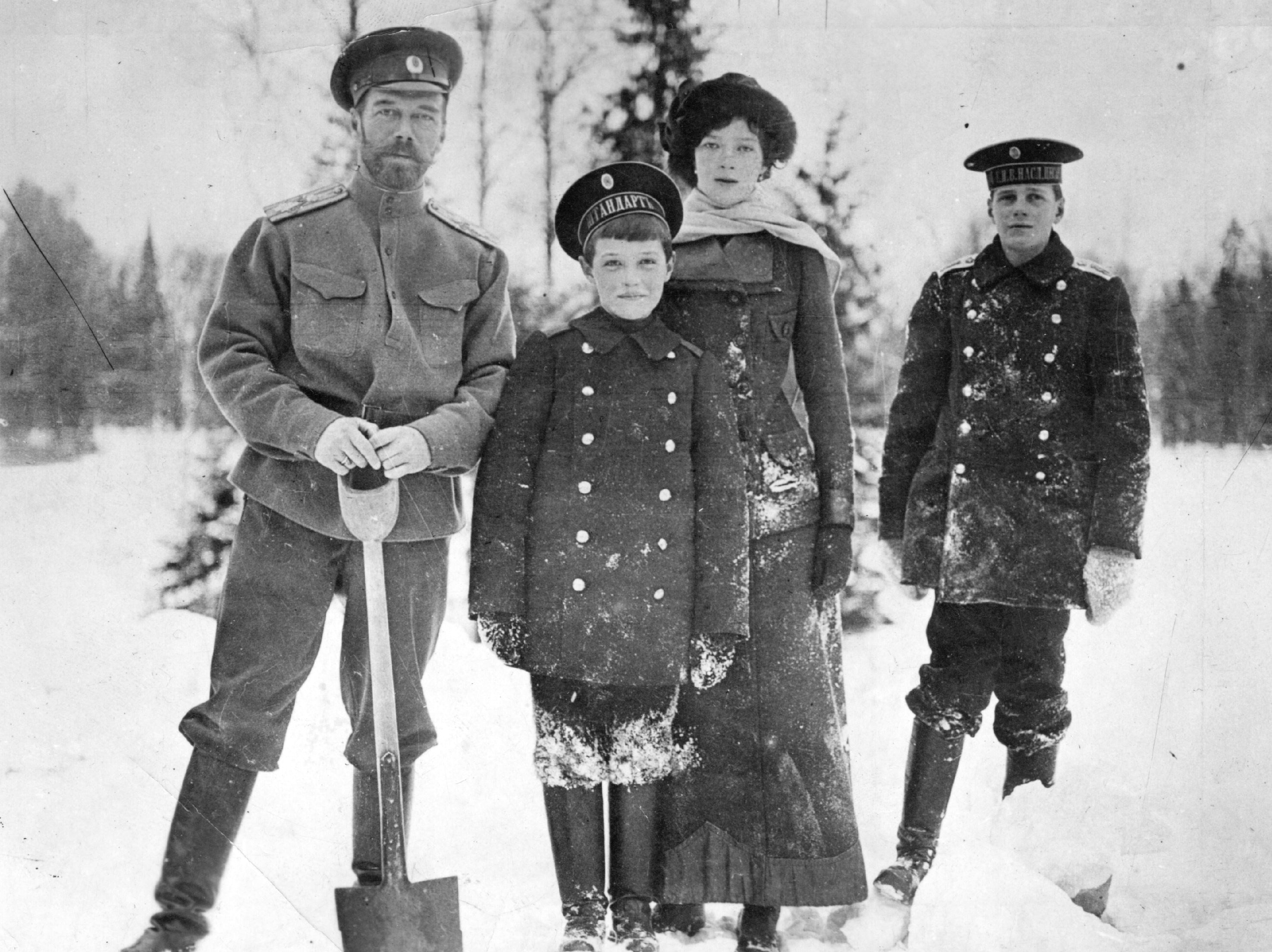
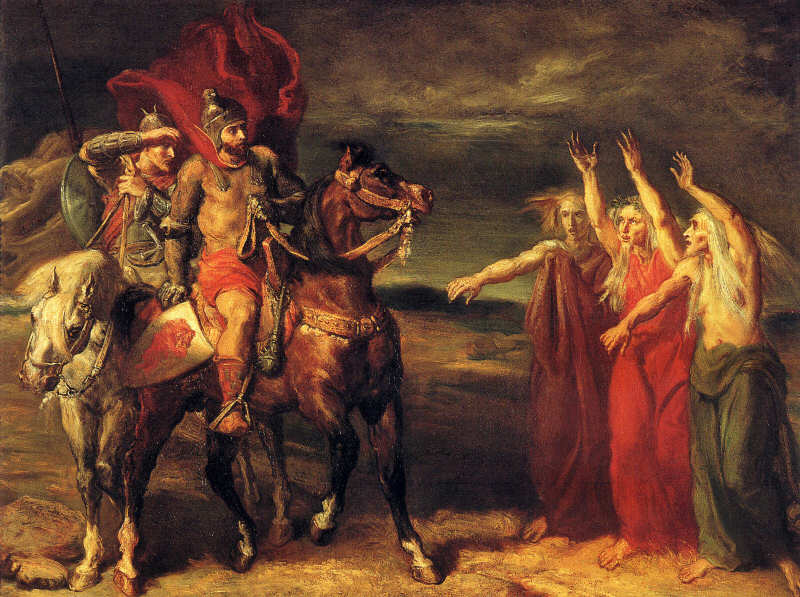
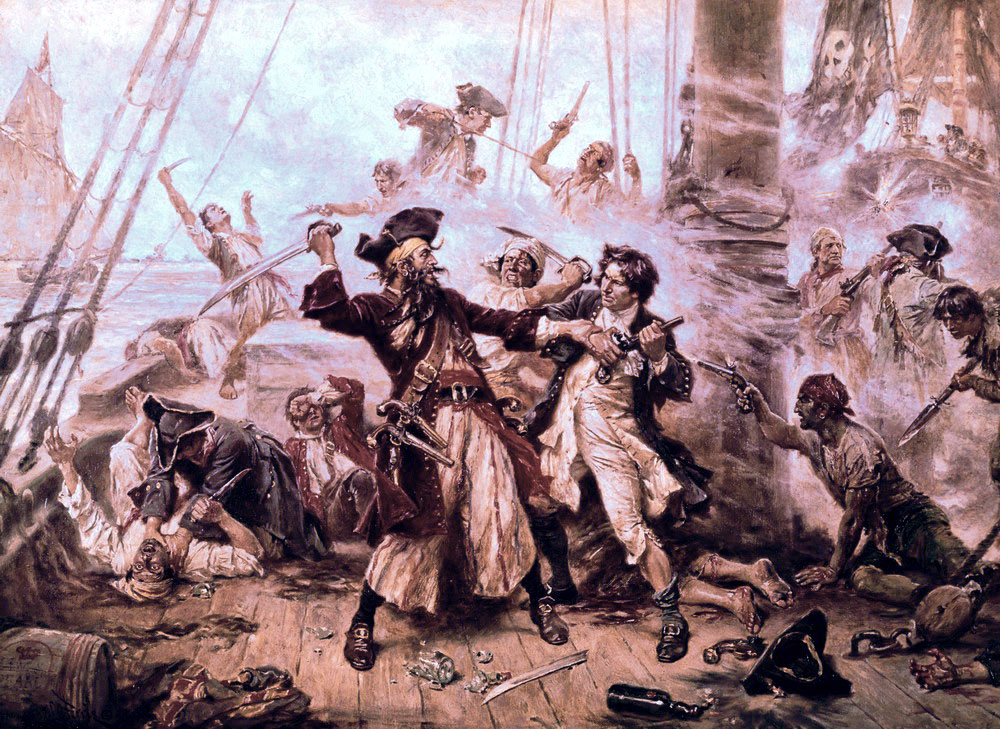
No comments:
Post a Comment